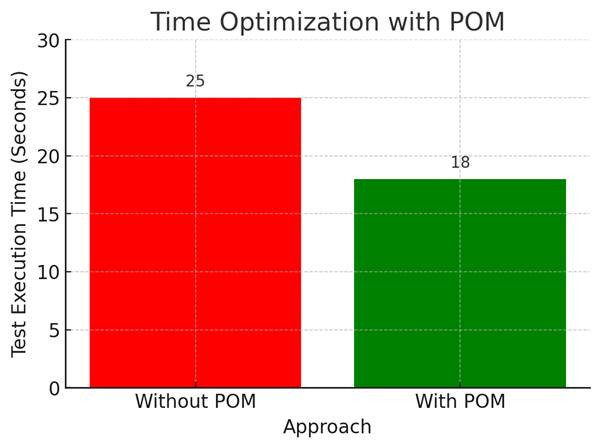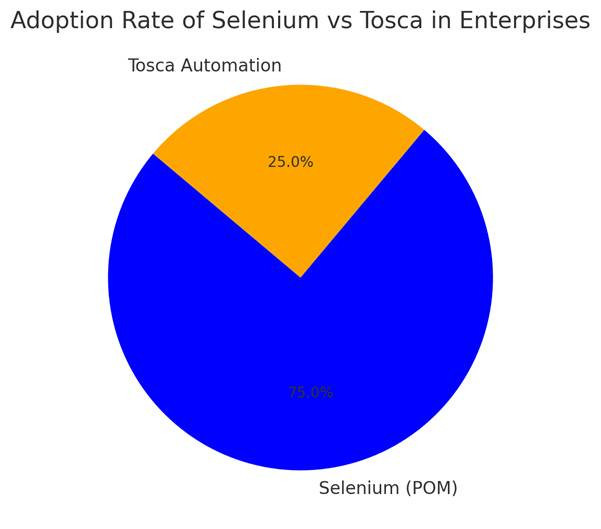views
Page Object Model (POM) In Selenium: Why And How To Use It?
Introduction
Test automation is a crucial aspect of modern software development, ensuring robust and efficient web applications. One of the most effective design patterns in Selenium WebDriver is the Page Object Model (POM), which improves test maintainability and reduces code duplication. Implementing POM ensures better scalability and reduces maintenance costs in test automation frameworks. If you are looking to master Selenium automation, enrolling in Selenium Online Training in India can provide hands-on experience in implementing POM effectively.
Why Use Page Object Model in Selenium?
1. Enhanced Code Reusability
POM structures the code in a way that separates test scripts from the UI elements, making them reusable across multiple test cases.
2. Improved Maintainability
Any changes in the UI require modifications in a single place (Page Class), ensuring that test cases remain stable and easy to update.
3. Better Readability & Scalability
With well-structured test scripts, POM makes automation frameworks easier to scale when adding new test scenarios.
How to Implement Page Object Model in Selenium?
The implementation of POM involves three key components:
- Page Classes - Representing individual web pages with defined locators and methods.
- Test Scripts - Calling the methods of page classes to perform actions.
- Base Class (Optional) - Managing common functions such as browser setup, teardown, and wait conditions.
Example Implementation of POM in Selenium (Java)
Step 1: Define the Page Class
import org.openqa.selenium.WebDriver;
import org.openqa.selenium.WebElement;
import org.openqa.selenium.support.FindBy;
import org.openqa.selenium.support.PageFactory;
public class LoginPage {
WebDriver driver;
@FindBy(id="username")
WebElement username;
@FindBy(id="password")
WebElement password;
@FindBy(id="loginButton")
WebElement loginButton;
public LoginPage(WebDriver driver) {
this.driver = driver;
PageFactory.initElements(driver, this);
}
public void login(String user, String pass) {
username.sendKeys(user);
password.sendKeys(pass);
loginButton.click();
}
}
Step 2: Define the Test Class
import org.openqa.selenium.WebDriver;
import org.openqa.selenium.chrome.ChromeDriver;
import org.testng.annotations.AfterTest;
import org.testng.annotations.BeforeTest;
import org.testng.annotations.Test;
public class LoginTest {
WebDriver driver;
LoginPage loginPage;
@BeforeTest
public void setup() {
System.setProperty("webdriver.chrome.driver", "chromedriver.exe");
driver = new ChromeDriver();
driver.get("https://example.com/login");
loginPage = new LoginPage(driver);
}
@Test
public void testLogin() {
loginPage.login("testuser", "password123");
}
@AfterTest
public void teardown() {
driver.quit();
}
}
Comparison: POM vs Traditional Approach
|
Feature |
Traditional Selenium |
Page Object Model |
|
Code Reusability |
Low |
High |
|
Maintenance |
Difficult |
Easy |
|
Readability |
Low |
High |
|
Scalability |
Limited |
High |
Selenium Automation Testing: Performance Metrics

Cost Analysis of Selenium Automation
For professionals interested in learning Selenium automation, it is essential to compare the Software Testing Course Fees Online to make an informed decision.
|
Course Provider |
Course Fees (USD) |
Duration |
|
Online Bootcamps |
$400 - $800 |
8-12 Weeks |
|
University Courses |
$1,000 - $2,500 |
3-6 Months |
|
Self-Paced Learning |
$100 - $400 |
Flexible |
Understanding the Software Testing Course Fees Online helps professionals choose the best learning path based on budget, flexibility, and career goals.
POM vs. Tosca for Test Automation
While Selenium with POM is a popular choice for automation, some enterprises prefer model-based testing tools like Tosca. Professionals interested in mastering the Tosca Automation Certification should explore its benefits.
|
Feature |
Selenium (POM) |
Tosca Automation |
|
Open Source |
Yes |
No |
|
Script-Based |
Yes |
No (Scriptless) |
|
Ease of Use |
Moderate |
High |
|
Enterprise Support |
No |
Yes |

For professionals looking to specialize in Selenium automation, enrolling in a Selenium Online Training in India provides structured learning and practical implementation strategies.
Conclusion
The Page Object Model (POM) is a powerful design pattern that enhances the efficiency, scalability, and maintainability of Selenium test automation. By separating test logic from UI elements, POM reduces redundancy and improves test script reusability. Integrating POM with frameworks like TestNG, Cucumber, and Appium further strengthens automation capabilities. For professionals aiming to excel in automation testing, mastering Selenium through structured learning programs can be highly beneficial.














Comments
0 comment